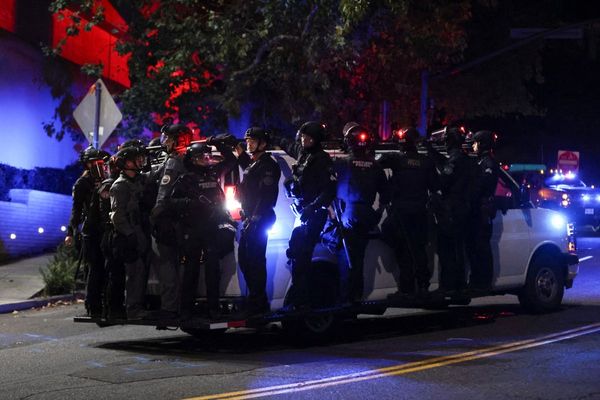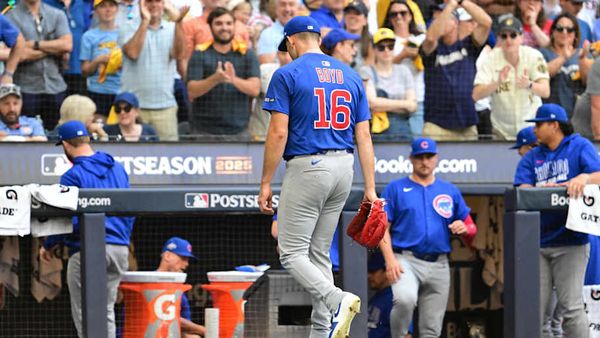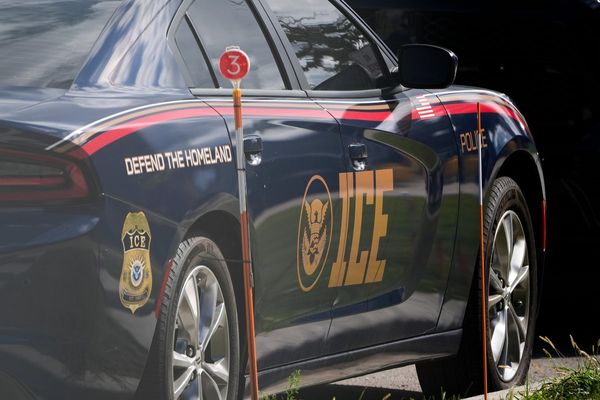In the 1970s, the intricately detailed cars with sleek paint jobs and lowered bodies cruised up and down Story and King in the heart of East San Jose. The largely Mexican-American neighborhood had become an epicenter of lowrider culture, building off what had begun on Whittier Boulevard in East Los Angeles 30 years prior.
Robert Diaz remembers gathering with his friends as a young teen on Friday and Saturday nights, sitting at the bus stop or the old Shakey’s Pizza on Story Road, watching the cars cruise by and imagining the day he’d buy his own lowrider. When he finally turned 16, he made the purchase: a 1977 root beer-brown Cutlass Supreme Brougham with a tan vinyl top.
Years later Diaz, who is the vice president of the United Lowrider Council of San Jose, “continues to live the lowrider lifestyle.” He drives a 1964 red Chevy Impala Super Sport, and his wife, Yvonne, drives a 1962 gold Chevy Impala convertible.
“It’s part of my culture, part of my life,” he said. “It’s deep-rooted in me.”
But while the lowrider community still has a place in San Jose, its favored activity of cruising has been banned in the city since 1986. At the time, the city cited traffic congestion, criminal activity, and the “environment of fear” created by cruising as reasons for the ban.
That could soon change.
Later this month, the San Jose City Council is slated to discuss whether to repeal the ban outright — a suggestion made by Councilmember Raul Peralez.
It’s an issue the downtown councilman knows a few things about, having grown up lowriding with his parents in San Jose.
When he was old enough to drive, the first car he bought was also a lowrider — a 1965 emerald green Chevy Impala Super Sport with a black vinyl hard top. The term lowrider typically refers to a vintage, customized car with a lowered body, sometimes employing hydraulics to move up and down.
But because of the type of car he drove and the ban on cruising, a teenage Peralez, who would later pursue a career in law enforcement, was pulled over by the police “dozens and dozens of times.” He was made to sit on the curb, was searched and was suspected of being involved in gang activity or possessing drugs or weapons.
Peralez called the policy “discriminatory in nature” since the police department has historically used it as a tool to monitor gangs and regulate other illegal activities such as sideshows and speed exhibitions. But lowriders say it’s unfair to equate cruising with lawbreaking, arguing that it’s about community and showing off their cars, in which they invest sometimes hundreds of thousands of dollars.
But since 2007, when the San Jose Police Department implemented its electronic citation system, no citations have been given out for cruising, according to Police Chief Anthony Mata. The department, however, doesn’t know how many handwritten tickets have been given out for cruising in the last decade or so.
“I don’t feel we’re losing anything,” Peralez said of the potential repeal. “I feel we’re actually gaining a lot by making it very clear that we have no intent on criminalizing cruising and we’re going to be fully focused on criminalizing the things that actually are inherently dangerous in our community.”
The police department, however, still has concerns about repealing the decades-old law. In a May 31 memo, Mata said that cruising leads to “quality-of-life issues and illegal activities.” Instead of repealing the ban, the department is proposing allowing cruising only during permitted or sanctioned events, or suspending the ban for six months to evaluate the impact it would have. The law defines cruising as “the repetitive driving of any motor vehicle past a traffic-control point in congested traffic at or near the traffic-control point.”
The criminalization of lowriding isn’t unique to San Jose, though, according to Evergreen Valley Community College Professor Arturo Villarreal. Lowriders have long been victims of police harassment and intimidation, he said.
If repealed, San Jose would be added to the growing list of California cities overturning bans on cruising. Last month, the Sacramento City Council voted to revoke its ban, and National City is currently testing out a six-month trial period to allow cruising. San Francisco allows cruising, but Oakland continues to ban it.
The state Assembly Transportation Committee this week passed a resolution to encourage cities to repeal anti-cruising ordinances.
Anti-lowriding sentiments can be traced back to the Pachucos — a Mexican American subculture in the 1940s that was often associated with gang activity and lowriding, Villarreal said. The stereotype was only further cemented through media representations like the 1979 film “Boulevard Nights,” about gangs in East Los Angeles.
“Most people, they just know it on the surface,” Villarreal said. “It’s deep. It’s a societal ritual. It’s a cultural ritual and it has its place. It has its purpose just like any other element or ritual or ceremony. It’s a form of social expression.”
For Ashley Palomo, lowriding is about family and community. Its stereotyped association with gangs and criminal activity, she said, couldn’t be further from the truth.
When the single mother of three isn’t lowriding with her three children, she’s an active member of the Sacramento chapter of the Majestics Car Club. And while their cars often take center stage, the group regularly gets together to volunteer, cleaning up parks or running fundraisers for homeless shelters or schools.
If San Jose decides to repeal its cruising ban, she believes more people will come out into the community.
“I know people are sometimes discouraged with going out in their cars because they don’t want to get in trouble or they don’t want to get a ticket,” she said. “I think there’s a lot of positive in lowriding and I don’t think people realize it until they’re around it.”
Despite the decades-long ban, Diaz said cruising is still very much alive on the streets of San Jose. But the ban’s potential repeal, he said, will offer solace and “peace of mind” to lowriders who fear being pulled over by cops looking for sideshows or speed exhibitions.
“We put a lot of money in our cars and for us to go out there to race our cars, that’s not what we’re about,” he said. “We go out there and cruise. We go low and slow and play music and have fun.”







